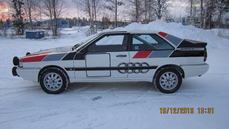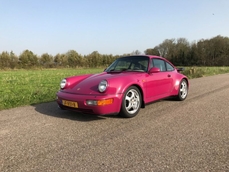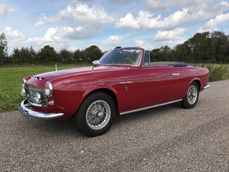Audi Quattro 1982
General description :
The production of the legendary ‘Ur Quattro’ was 11,450 vehicles. With this car, Audi introduced the four-wheel-drive system with which has won the brand so much success. The car now on offer was delivered in Germany in November 1982. Its original colour was white, but with the owner inspired by Quattro’s successes in the many rallies in which it took part, it was decided to give this car the looks of the programme car developed for Group B rallying, which had proven unbeatable. The car was sprayed in the right colour scheme and equipped with all the proper features, making this car an exact copy. Mechanically, the car has remained unchanged so this car is allowed on the roads.
Van de legendarische "Oer-Quattro", of "Ur-Quattro" werden 11450 exemplaren gebouwd. Audi gaf met deze auto het startschot voor het succesvolle vierwielaandrijving concept dat het merk veel gebracht heeft. De auto die wij aanbieden werd in Duitsland geleverd in november 1982 in de kleur wit. Geïnspireerd door de rally successen die de Quattro in de 80er jaren boekte werd besloten om deze auto de looks te geven van de onverslaanbare Rally Groep-B Quattro. De auto werd gespoten in de juiste kleurencombinatie en voorzien van alle details zodat uiteindelijk deze exacte kopie ontstond. Technisch is de auto onveranderd zodat gewoon deelgenomen kan worden aan het verkeer.
1982 Audi Quattro is listed for sale on ClassicDigest in Fien de la Marstraat 59NL-1902 MT Castricum by Veni Vidi Vici Classic Cars BV for €57500.
Car Facts
Car type : Car Make : Audi Model : Quattro Engine size : 2.1 Model Year : 1982 Sub type : Coupé Location : Fien de la Marstraat 59NL-1902 MT Castricum Vehicle Registration : Undefined
57500 €
Seller Information
Veni Vidi Vici Classic Cars BV
Veni Vidi Vici Classic Cars BV
+31 6 51298532
Veni Vidi Vici Classic Cars BV
+31 6 51298532
People who viewed this Audi Quattro also viewed similar Audi listed at ClassicDigest
Other cars listed for sale by this dealer
About Audi
Audi Automobilwerke GmbH Zwickau was founded by August Horch and his partners. In August 1928, the majority of shares in Audiwerke AG were acquired by Jørgen Rasmussen,the owner of Dampf-Kraft-Wagen (DKW) In 1932, Audi merged with Horch, DKW, and Wanderer, to form Auto Union. Auto Union used the four interlinked rings as their logo, the Audi badge today, representing these four brands.After the war, Daimler-Benz had taken 100% holding in the Auto Union company by1959. By mid-sixties they had decided to sell to Volkswagen -a decision Mercedes must be regretting by now. Under VW control they took the two-stroke DKW F102, fitted it with a modern Mercedes designed four-stroke engine et voilá a new modern Audi had emerged. The rest, as they say, is history.

























